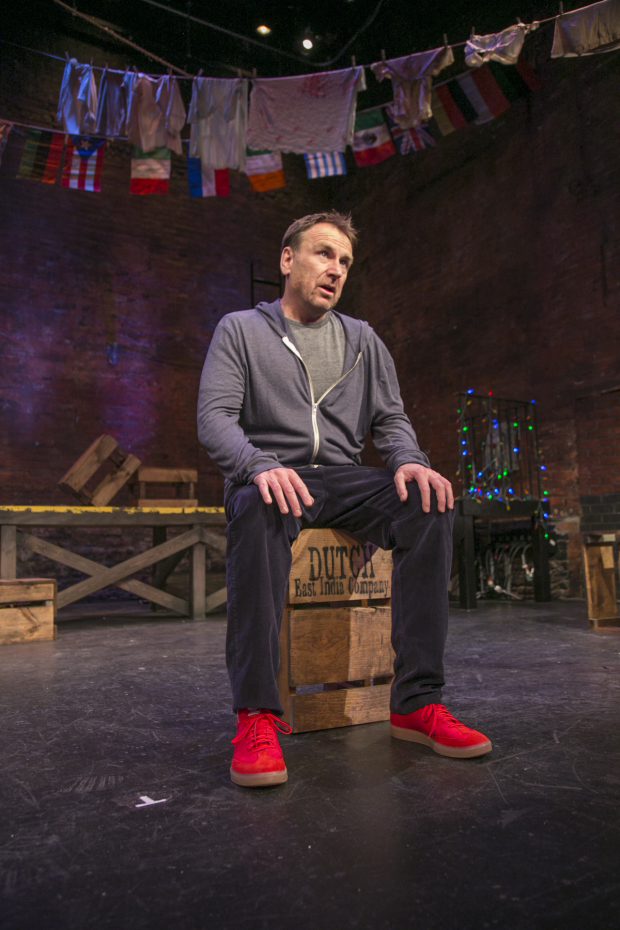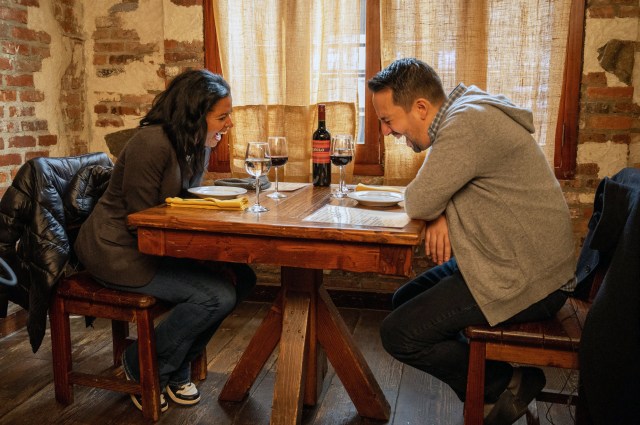Colin Quinn The New York Story
A comedian pays tribute to the city of his birth and all the crazy people who have also called it home.

(© Mike Lavoie)
Deep in the heart of the West Village — arguably the epicenter of where Carrie Bradshaw's horrifying vision of New York has now come to fruition — there's an off-Broadway theater in which a small handful of people gather nightly to celebrate the Gotham of yesteryear. Their high priest is SNL alum Colin Quinn, whose latest standup show, The New York Story, is half history lesson, half old-fashioned ethnic humor, and totally hilarious.
Based on Quinn's recently published The Coloring Book: A Comedian Solves Race Relations in America, the night takes a form similar to Quinn's last two theatrical endeavors (Long Story Short and Unconstitutional): Standing on a New York City street scene, the fast-talking Quinn regales us with his seemingly off-the-cuff observations. The topic of the evening is the city of Quinn's birth: New York.
Quinn walks us through the city's history, from the dubious purchase of the Dutch East India Company to the British takeover to modern day. He stops to examine each successive wave of immigrants and how they've contributed to the New York attitude: the Germans (a "rude polite" sense of customer service), the Irish (sarcasm), the Jews (relentlessness). No one is spared from Quinn's dexterous mixture of mockery and admiration.
Consistent with this multiethnic comedy roast, Sara C. Walsh's set is an imagined block party circa 1977. A banner of international flags crosses paths with a line of drying laundry. A crate of apples sports the label "Dutch East India Company." Quinn makes his initial descent from (what else?) a quintessential brownstone stoop (which he informs us is a Dutch word). Quinn occasionally interacts with the set, but it's really more evocative than active. This show is steadfastly focused on the performer and his intimate conversational style.
That formula works well for Quinn and director Jerry Seinfeld, as it has in their previous two shows that can best be described as theatrically enhanced standup. The material is not only sidesplitting, but deeply engaged with the zeitgeist.
For example, Seinfeld recently explained to ESPN Radio why he no longer performs at college campuses. "They just want to use these words: 'That's racist,' 'That's sexist,' 'That's prejudiced,'" he charged, adding, "They don't know what the hell they're talking about."
Seinfeld's influence can be felt in the show's latter third, which serves as a preemptive response to that "politically correct" culture (most often expressed in the Internet "think piece") which increasingly brands Quinn's blue-collar brand of ethnic humor unacceptable for not maintaining an obsequious deference to correct language (the classist implications of which are rarely explored on Salon.com). "It's like people are walking on eggshells carefully, trying to make sure they don't offend anyone," Quinn notes. "You can't celebrate diversity and have no differences at the same time."
It's a telling irony that as our language around identity has become more guarded the city itself has come to look a whole lot more homogeneous. "You get on the L train at two-o'clock in the morning and it looks like a ski lift," he states. It may be too late to salvage the nostalgic melting pot of Quinn's childhood (and considering the terrible crime and urban blight of the '60s and '70s, that may not even be desirable), but Quinn isn't going out without a fight: "In the spirit of political correctness, I'd like to end with a Polish joke."









